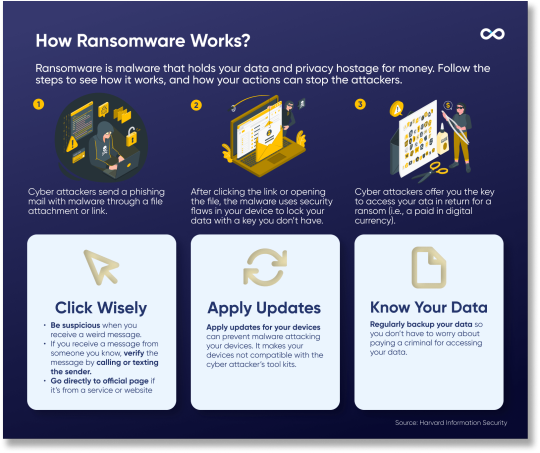#web application firewall
Text
youtube
#Firewall#AWS WAF#AWS Web Application Firewall#WAF#Web Application Firewall#AWS#Amazon#Amazon Web Services#Youtube
2 notes
·
View notes
Text
In today’s digital era, where web applications play a vital role in businesses of all sizes, ensuring their security is paramount. One crucial tool in the cybersecurity arsenal is the Web Application Firewall (WAF). A Web Application Firewall acts as a shield, protecting web applications from a myriad of online threats and attacks. But what exactly is a Web Application Firewall, and how does it work?
0 notes
Text
Fortifying Digital Frontiers: Navigating Cybersecurity Challenges with Advanced Web Application Firewall
0 notes
Text
Un Web Application Firewall français
Avec la multiplication des attaques sur les sites web, et la découverte presque quotidienne de nouvelles failles, le suivi devient difficile.
C'est pour cela que nous avons créé ProtectMy.site !
C'est un Web Application Firewall. Il se place entre votre site et vos visiteurs pour filtrer le traffic malicieux et inutile. C'est jusqu'à 50% de charge en moins sur votre serveur !
Il bloque les attaques en détectant les signatures des tentatives d'injection SQL, d'exploitation de faille XSS, etc... Il connait déjà plus de 3 millions d'adresses IP malveillantes.
Nous avons déjà les profils pour la protection des sites WordPress, Drupal, Magento, Prestashop, etc... Donc sa mise en place est rapide.
#cybersécurité#cyberprotection#wordpress#prestashop#magento#ddosattack#sqlinjection#xss#csrf#web application firewall
1 note
·
View note
Text
#artificial intelligence#marketing#whatsapp#search engine optimization#social media#tumblr tv#web application development#web application security#web application firewall#web application services#web application testing#next generation
0 notes
Text
Defend your enterprise with Virtual Patching: Safeguard against vulnerabilities effectively. Learn more now
#virtual patching#vulnerability management#vulnerability#vulnerabilities#waf#web application firewall#cybersecurity#apptrana#indusface#web application security
0 notes
Text
How to Choose the Right Web Application Firewall for Your Needs

What is a web application firewall?
A web application firewall (WAF) is a security solution that protects web applications from a variety of attacks, including cross-site scripting (XSS), SQL injection, and denial-of-service (DoS) attacks. WAFs work by filtering and monitoring HTTP traffic between a web application and the internet. They can be deployed as hardware, software, or cloud-based solutions.
How does a WAF work?
A WAF works by inspecting HTTP requests and responses for malicious patterns. These patterns are typically defined in a set of rules, which are called policies. When a WAF detects a request that matches a policy, it can take one of several actions, such as blocking the request, logging the request, or rewriting the request.
What are the benefits of using a WAF?
WAFs can provide a number of benefits, including:
Increased security: WAFs can help to protect web applications from a variety of attacks, including XSS, SQL injection, and DoS attacks.
Reduced risk of data breaches: WAFs can help to prevent attackers from stealing sensitive data, such as credit card numbers and passwords.
Improved performance: WAFs can help to improve the performance of web applications by filtering out malicious traffic.
Reduced costs: WAFs can help to reduce the costs of security by preventing attacks and data breaches.
What are the different types of WAFs?
There are three main types of WAFs:
Hardware WAFs: These are WAFs that are deployed as physical appliances. They are typically more expensive than other types of WAFs, but they can provide better performance and security.
Software WAFs: These are WAFs that are deployed as software on a web server or application server. They are typically less expensive than hardware WAFs, but they may not provide the same level of performance and security.
Cloud-based WAFs: These are WAFs that are deployed in the cloud. They are typically the most affordable option, but they may not provide the same level of control as other types of WAFs.
How to choose a WAF
When choosing a WAF, there are a number of factors to consider, including:
The size and complexity of your web applications
The types of attacks you are most concerned about
Your budget
Your technical expertise
It is important to consult with a security expert to help you choose the right WAF for your needs.
Conclusion
WAFs are an important part of a comprehensive web application security strategy. By filtering and monitoring HTTP traffic, WAFs can help to protect web applications from a variety of attacks. When choosing a WAF, it is important to consider the size and complexity of your web applications, the types of attacks you are most concerned about, your budget, and your technical expertise.
ENHANCE YOUR WEB APP’S SECURITY WITH ZOONDIA!
Are you searching for a solution to minimize the risk of a data breach on your web application? Partner with Zoondia, a reputable leader in web application development solutions, and unlock boundless possibilities for advancement in software.
Contact us now to uncover how Zoondia stands ready to be your strategic ally in transforming web app development with state-of-the-art software solutions. Let’s work together to craft a more promising tomorrow for your business.
#Web Application Firewall#custom software development company in dubai#mobile app development company#big data consulting in dubai#web design company dubai#IT Consulting Services in Dubai
0 notes
Text
Error 20と表示されてページが見れない場合の対処法
「An error has occurred Error 8」と英語のページが表示されて本来のページが見れない場合の対処法
Continue reading Untitled

View On WordPress
#An error has occurred#CDN#Cloud WAF#Incapsula#WAF#Web Application Firewall#エラー#エラー対処法#オンラインサービス#クラウド#鯖落ち
0 notes
Text
#WordPress Security#WordPress development services#Web Application Firewalls#Content Security Policies#hosting services
0 notes
Text
Web Application Firewall Market revenue to cross USD 73 Billion by 2035
The global ‘web application firewall market’ is poised to rise at a CAGR of ~21% from 2023 to 2035. The sector is set to garner a value of about USD 73 billion by the end of 2035, up from a revenue of close to USD 7 billion in the year 2022. The major element to dominate the rise in the sector’s growth is a rise in the number of online applications. Globally, about 89 thousand applications were launched which is the highest that the month before through the google play store. A WAF, or web application firewall, assists in protecting online applications by testing and keeping track of HTTP traffic between a web application and the Internet.
Moreover, the prevalence of cyber-attack is also on the rise. In 2022 compared to 2021, approximately 37% of cyberattacks increased across the globe. Hence, in order to prevent this the demand for web application firewalls is increasing. Additionally, it defends against attacks including cross-site scripting (XSS), file inclusion, SQL injection, and cross-site forgery that target online applications. Additionally, a WAF reduces the administrative work needed to guarantee adequate ongoing web application security testing. Application security teams could maintain tabs on what is appropriate to let through a WAF by actively setting guidelines and requirements. In order to react to possible security events much more quickly, teams are able to get prompt information of an assault that is already underway.
Request Free Sample Copy of this Report @
Growing Penetration of IoT to Boost the Growth of the Global Web Application Firewall Market
As the world becomes increasingly linked, technologies including IoT are being used in a wider range of end-user applications. Globally, there are approximately 14 Billion devices connected to IoT. In order to run their business as efficiently as possible, organizations are adopting such connected devices more frequently in their procedures. Different hacks and security flaws have been added to the threat landscape as there are more devices and related applications. A large number of IoT technology and developer businesses are deploying and advising cutting-edge security solutions, including WAFs, to handle such circumstances.
Web Application Firewall Market: Regional Overview
The global web application firewall market is segmented into five major regions including North America, Europe, Asia Pacific, Latin America, and the Middle East and Africa region.
Growing Security Vendors to Boost the Growth of the Market in North America
The market in North America for web application firewall is set to grow at the highest share of 37% over the forecast period. This growth of the market in this region could be attributed to growing security vendors. As of 2023, there were about 11,045 security services companies in the US, a growth of approximately 0.3% from 2022. Moreover, government action has increased in this region in recent years due to the growing concern about ensuring the protection of financial and sensitive data. New types and variations of cyberattacks are joining the dangerous environment as there are more connected devices in use. As a result, over the forecast period, the web application firewall is being widely adopted in this region.
Rising Penetration of the Internet to Influence the Growth in Market in Asia Pacific
The Asia Pacific web application firewall market is also poised to have a significant rate of 28% over the forecast period. The major factor to boost the market growth in this region is the rising penetration of the internet. The number of internet users in Asia Pacific is projected to increase from about 2 billion (approximately 40% of the population) in 2017 to about 3 billion (approximately 61% of the population) in 2022. Additionally, the network infrastructure has grown in tandem with increased modernization and urbanization in this region. As a result, sophisticated and advanced threats are difficult to identify. Therefore, the demand for web application firewall is set to boost in this region.
The government sector segment is projected to have significant growth by the end of 2035. This growth of the segment could be attributed to the growing threat of cyberattacks to the government. In 2022, about 3% of the total ransomware attacks globally took place with governmental organizations. Hence, average overall expenditures increased from about USD 2 million to approximately USD 3 million as a result of the about 6% increase in data breach costs in the public and governmental sectors. This also increase potential risk to the general public since large data is saved in government application. Hence, the need for web application firewall is growing in this sector.
The large enterprises segment is set to grow at the highest rate over the forecast period. This growth of the segment could be attributed to growth in a number of large enterprises. In comparison to about 337,522 in 2020, there were approximately 351,519 large enterprises with 250 or more employees globally in 2021. Web application firewall (WAF) software is essential for protecting websites from numerous online attacks in large enterprises. Additionally, it has a high cost, which enables huge businesses to purchase it. Additionally, it offers defense against other types of assaults including SQL injection and cross-site scripting. Web-based and cloud-based WAF software are both accessible.
Access our detailed report at@
0 notes
Text
#Web Application Firewall Market#Web Application Firewall Market size#Web Application Firewall Market share#Web Application Firewall Market trends#Web Application Firewall Market analysis#Web Application Firewall Market forecast#Web Application Firewall Market outlook#Web Application Firewall Market overview#Web Application Firewall Market report
0 notes
Text
Don’t let flaws compromise the integrity of the app!

In the modern digital era, where cyberattacks are getting more complex and frequent, application security is essential. App vulnerabilities can compromise the integrity of your app and put your users’ sensitive information at risk. Therefore, ensuring your application is secure and protected from potential cyber threats is essential. This blog will discuss how application security protects your apps by attaining, fixing, and strengthening the security once we deploy them. Read More: Don’t let flaws compromise the integrity of the app!
#app encryption#cloud app security#cloud security#critical infrastructure protection#cybersecurity and infrastructure security agency#data encryption#data encryption standard#data loss prevention#data security#database activity monitoring#endpoint security#firewall in computer network#infrastructure security#network admission control#network firewall security#Network Security#prisma cloud#secure cloud storage#security on the internet#web application security
0 notes
Text
youtube
Website: https://www.haltdos.com/ Follow Us on : LinkedIn: https://www.linkedin.com/company/halt... Facebook: https://www.facebook.com/haltdos/ Twitter: https://twitter.com/halt_dos#webapplicationfirewall#WAF#security#redirectionrules#HTTPtoHTTPS#domainredirection#URLredirection#IPaddressredirection#timebasedredirection#referralbasedredirection#cybersecurity#userexperience#tutorialvideo#onlinesecurity#websecurity
0 notes
Text
Protect Your Web App Now! Choose The Best Open Source / Free WAF

Every day, malicious bots and hackers scan the internet looking for vulnerable websites to exploit. If your site isn’t properly protected, you could be the next victim. We’ve put together a list of best practices for your web application, as well as some techniques to help combat this growing threat.
Use multiple passwords
A common practice is to use one master password to access all applications and devices. This weakens both the security and privacy of your network. Instead, it’s recommended that you use two or more passwords for all sensitive accounts, including your application password.
Create regular backups
It’s also advisable to back up your web application regularly. Doing so helps reduce the risk of information being accidentally exposed.
Enable SSL encryption
Some applications are vulnerable to man-in-the-middle attacks, which could lead to misusing your customers’ data. You can prevent this by using SSL encryption on all ports by setting the enable_ssl parameter to true in the application descriptor file.
Open source WAF is alos a better choice for protect Web app & APIs.
Open Source WAF or Web Application Firewall
An open source firewall is a software program that helps protect your web application from attacks. It does this by filtering incoming traffic and blocking requests that are likely to be malicious.
There are many benefits to using an open source firewall. Firstly, it can save you money as you don’t have to pay for a commercial product. Secondly, it’s usually very easy to customize and configure to your specific needs. And thirdly, you benefit from the community of developers who are constantly improving the software.
There are a few things to consider when choosing an open source firewall. The first is compatibility — make sure the firewall will work with your web server and operating system. The second is ease of use — you don’t want something that’s going to be too difficult to configure. And finally, check the community support — you want to make sure there are people who can help you if you run into problems.
If you’re looking for an open source firewall, there are a few good options available. Haltdos is a popular choice.
Haltdos WAF Community Edition is a freemium edition provided by Haltdos. It is a high-functioning WAF and WAAP solution designed to protect Web Applications and APIs. Haltdos utilises a new HTTP request processing engine designed for optimised performance, creating complex rules, and mitigating sophisticated attacks. Some of its key features include captcha, rate limiting, anomaly detection, request and connection termination, and more.
Pros of Haltdos WAF CE:
-It can protect against OWASP Top 10 attacks, such as SQL Injection, XSS, RFI, LFI, RCE, etc.
-It has 1000+ rules with daily threat intel from Haltdos
-The WAF can be GUI-managed
-It also supports Anti-Bot and API security measures
-Built-in load balancing and server monitoring
-False Positives are easy to manage
-It has good documentation
0 notes
Photo

According to a PhishLabs report, by HelpSystems, ransomware attacks are growing more than 100% year-over-year 😮
As ransomware often arises as a result of attackers leveraging vulnerabilities. it is important to recognize those vulnerabilities to stop it.
Here’s an infographic about how ransomware works and the ways for you to prevent it from harming you.
Visit here to learn more: https://www.veecotech.com.sg/digital-marketing-statistics/
#web security#cybersecurity#pentesting#cyberattack#cybercrime#ethical hacking#backup#web application firewall market#web application security#mobile app security#pentest#penetration testing
0 notes
Text
A reverse proxy functions as an intermediary server positioned between the client and the origin server, serving to enhance both server performance and security.
#reverseproxy#cybersecurity#web application firewall#cyberattack#webapplications#application firewall#firewall
0 notes